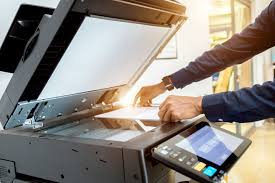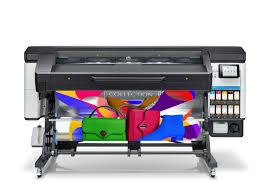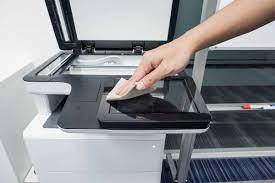In today’s fast-paced business environment, finding the right tools and strategies is essential for success. A common dilemma facing many entrepreneurs and startups revolves around office equipment, particularly printing solutions and fax machines. The keyword that’s gaining traction in many circles is “Lease printer for small business.” Here’s why this concept and great solution is resonating with the modern-day small business owner.
Cost-Effective Solution
The initial investment required for high-quality printing equipment can be substantial. However, when you opt to “Lease printer for small business,” you’re essentially choosing a route managed print out that requires minimal upfront costs. This approach can significantly benefit businesses operating on a tight budget, allowing them to save money and channel their funds into other crucial areas.
Access to Advanced Technology
The world of technology and print services is always evolving. By choosing to “Lease printer for small business,” companies can ensure that they’re not tied down to outdated equipment. Instead, they have the flexibility to upgrade and leverage the latest printing advancements.
Simplified Budgeting
Leasing printers means predictable monthly expenditures. There’s no need to set aside a hefty budget for maintenance, repairs, or replacements. This predictability of monthly lease payments can be a boon for small businesses looking to streamline their financial planning.
Flexibility in Scaling
A business’s needs aren’t static. As your operations grow, so might your paper capacity and printing requirements. The “Lease printer for small business” model allows companies to adapt quickly, ensuring they always have the right tools in place without the hassles associated with purchasing new equipment rent printers outright.
Consistent Maintenance and Support
Opting to “Lease printer for small business” often comes with less leasing costs and the added advantage of regular maintenance and robust customer support. This means fewer downtimes and more peace of mind, all the benefits of knowing that experts are just a call away.
Environmentally Friendly
When businesses buy printers, they may discard them once they’re outdated or malfunctioning. Leasing often includes services where the printer leases or provider takes back the old model for recycling or proper disposal, ensuring a reduced carbon footprint.
Preserving Capital
One can’t stress enough the importance of cash flow for small businesses. With the “Lease printer for small business” model, entrepreneurs can conserve their capital, using it for pressing needs or investment opportunities rather than tying it up in a depreciating asset.
Tailored Solutions
Every small business has unique printing requirements. Whether you need high-volume printing, colour accuracy for marketing materials, or multi-function capabilities, leasing allows you to choose and lease a printer out that matches your business expense and needs perfectly.
Tax Advantages
Leasing expenses for colour printers can often be claimed as a tax deduction, reducing your overall tax liability. Consult your accountant to your tax bill and explore the potential tax benefits that leasing a printer can bring to your business.
What is Printer Leasing?
Printer leasing is similar to renting an apartment. Instead of purchasing a printer outright, businesses enter into a contract with a leasing company to use the printer for a fixed price and specified period. At the end of the printer lease or term, businesses often have the option to buy the printer, return it, or upgrade to a newer model.
What is Printer Rental?
Printer or rental contract is a short-term agreement between a business and a service provider where the company acquires a printer for use over a specific period without the commitment of a long-term, lease agreement or purchase. Once the rental duration concludes, the printer is returned to the provider.
Factors to Consider When Opting for Printer Rental:
- Duration vs. Cost: Analyze the rental cost in relation to the duration. If your need extends beyond a certain period, leasing or buying might become a more cost-effective solution.
- Type of Printer: Make sure the rental service offers the specific printer type (inkjet, laser, multi-function) that aligns with your business needs.
- Included Services: Check if services like delivery, setup, and maintenance are part of the rental agreement.
- Print Volume: Ensure the rented printer can handle your expected print volume efficiently.
- Contract Clauses: Thoroughly understand the rental agreement. Are there any penalties for early termination or extended usage?
The Ultimate Guide to Choosing the Right Office Printer
In today’s digital age, one might assume that printers have become obsolete. On the contrary, printers remain an integral part of many businesses, helping transform digital ideas into tangible realities. Whether it’s printing contracts, brochures, or simple internal communications, having the right used office supplies and printer is crucial.
Types of Office Printers:
- Inkjet Printers: Best for versatile printing needs. They can handle regular documents and high-quality colored images, making them suitable for businesses that require occasional color prints.
- Laser Printers: Known for speed and efficiency, laser printers are ideal for offices with high-volume printing needs. They come in monochrome (black & white) and colored versions.
- Multifunction or All-in-One Printers: These combine printing, scanning, copying, and sometimes faxing into one machine, saving space and offering increased functionality.
- Dot Matrix Printers: An older technology, mainly used for printing multi-part forms or receipts. It’s less common in modern offices but still prevalent in specific industries.
Key Features to Consider:
- Print Speed: Measured in pages per minute (PPM). Higher PPM means faster printing, which is crucial for businesses with large print volumes.
- Print Quality: Depending on your needs (simple documents vs. high-quality graphics), assess the printer’s resolution, usually measured in dots per inch (DPI).
- Connectivity: Modern printers come with various connectivity options like Wi-Fi, Ethernet, USB, and even NFC. Think about how you want to connect your devices to the printer.
- Duplexing: An automatic duplexing feature can print on both sides of a page without manual intervention, saving paper.
- Paper Handling: Consider paper sizes and types the printer can accommodate. Also, evaluate the input and output tray capacity if you have high-volume printing.
- Cost per Page: A printer might be cheap to buy but expensive to run. Look at cartridge/toner prices and their yield to understand long-term costs.
- Security Features: For businesses with sensitive data, printers with security features like PIN-protected printing can be invaluable.
Maintenance and Support:
Always consider the warranty and support services offered by the manufacturer. Some companies provide onsite support, which can be beneficial for business operations.
Environmental Considerations:
Modern printers often come with energy-saving features. Look for new printer with Energy Star ratings and consider desktop printers with automatic power-saving modes.
What is Office Printer Leasing?
In essence, office printer leasing is a financing option where instead of purchasing a printer outright, a company enters into a contract with a leasing provider to use the printer for a predetermined period. At the end of this term, in lease agreements, the business usually has the option to buy the printer outright purchase it, return it, upgrade to a newer model, or extend the lease.
Applications of Large Format Printers:
- Advertising & Signage: Production of banners, posters, billboards, and point-of-sale displays.
- Graphic Arts: Creating artwork reproductions, wall murals, and photography enlargements.
- Textile and Apparel: Printing designs directly onto fabrics.
- Architecture & Construction: Printing detailed architectural drawings, blueprints, and schematics.
- Education & Research: Producing maps, charts, and other visual aids.
Types of Large Format Printers:
- Aqueous Inkjet: Uses water-based inks and is suitable for short-term indoor graphics. They provide high-resolution prints and are typically faster than solvent models.
- Solvent Inkjet: Uses solvent-based inks which are durable and water-resistant. These are ideal for outdoor graphics, vehicle wraps, and banners.
- UV Printers: Uses ultraviolet light to dry or cure the ink instantly. They can print on a variety of surfaces, including glass, wood, and metal.
- Dye Sublimation: Transfers a design to a material using heat. Primarily used for fabric printing.
- Latex Printers: Uses water-based latex inks, offering both the durability of solvent printers and the environmental benefits of aqueous printers.
What is a Multifunction Printer (MFP)?
An MFP consolidates the capabilities of multiple devices—typically a printer, scanner, copier, and fax machine—into a single unit. This amalgamation can range from basic models suitable for home offices to advanced versions tailored for large corporations.
In Conclusion
The “Lease printer for small business” model offers an array of advantages in today’s volatile market. From financial benefits and hidden costs to ensuring access to top-notch technology, it’s a strategy that small businesses should consider. As the business world continues to shift and evolve, having flexible solutions in place, like a business printer leasing, might just be the key to staying one step ahead.




Recent Comments